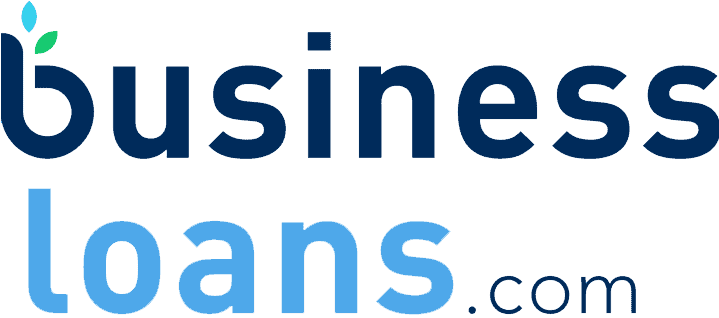Learn what criteria qualifies you (type of business, loan amount, etc.) qualifies you for which forgiveness form.

The Paycheck Protection Program (PPP) was created to provide financial relief to businesses suffering from the effects of the devastating coronavirus pandemic. The first round of PPP funding in 2020 saw $669 million in forgivable SBA-backed PPP loans distributed to businesses by lending institutions participating in the program. The PPP reopened to qualifying businesses on January 11, 2021, after the federal government authorized another $284 billion in PPP funding.
If you have received a PPP loan for your business, you can have the portion of the loan you used for qualifying purposes forgiven by the SBA. Of course, to get your loan forgiven, you’ll first have to apply for forgiveness and have your forgiveness application accepted.
Thankfully, the SBA has expanded the number of borrowers that are eligible to use the simplest and easiest forgiveness application. This was done to make forgiveness of PPP loans under $150,000 more of an automatic process. However, you’ll still be required to provide certain information about how you’ve used your funds, so this process is not fully automatic for any PPP borrower.
A recent change to PPP loan forgiveness is the launch of the SBA PPP Direct Forgiveness Portal. The portal will be available beginning August 4, 2021, and allows borrowers to apply for forgiveness directly through the SBA. The portal is available to borrowers who received loans of $150,000 or less. The lender used by the borrower must also opt-in to the portal.
If you do not qualify to use the PPP Direct Forgiveness Portal, you will need to apply for forgiveness through the lender that serviced your PPP loan, not the SBA itself. To do this, you’ll need to submit one of the three available forgiveness application forms, depending on your circumstances: SBA Form 3508, SBA Form 3508EZ, or SBA Form 3508S.
Note that you may need to submit more than just a completed application form to qualify for loan forgiveness. Depending on the amount you’ve received and how you spent your loan funds, you may also need to submit payroll documentation, bank statements, account statements, tax forms, receipts, and/or canceled checks to support your forgiveness claim. However, this article is exclusively dedicated to the three forgiveness application forms available.
This article will discuss the circumstances that call for using PPP 3508EZ vs. 3508 vs. 3508S.
The 3508S and 3508EZ applications are simplified compared to the regular 3508 form. The chief differences are that the easier forms don’t require you to fill out a Schedule A form or a Schedule A Worksheet. However, you have to meet certain criteria to use one of the easier forms.
When To Use The 3508S Form
It’s easy to understand the simple requirements for being eligible to use the 3508S form: The amount of your first or second draw PPP loan must have been $150,000 or less.
There’s only one caveat to this: If your business is contracted with or affiliated with other businesses, and the PPP loan total across all said affiliates is greater than $2 million, you cannot use the 3508S form. Instead, you must use one of the other two forms, even if your business received a PPP loan of $150K or less.
Form 3508S has the simplest reporting requirements of the three PPP forgiveness forms and is the easiest to fill out. It was created to streamline the forgiveness process for those with smaller PPP loans. Smaller businesses had been getting bogged down needlessly by onerous reporting requirements for receiving relatively small loans that were fundamental to their survival.
When To Use The 3508EZ Form
The 3508EZ form is for borrowers that received first or second draw PPP loans of more than $150,000.
If you’re eligible to use the 3508EZ form when applying for PPP loan forgiveness, you’ll get to save some time and energy compared to those who have to fill out the regular 3508 form. However, you’ll have to meet at least one of the following three criteria to be eligible to use the 3508EZ form:
- You are a self-employed individual, an independent contractor, or a sole proprietor who had no employees at the time you applied for a PPP loan
- You didn’t reduce the salaries or wages of employees making under $100K/year by more than 25%, and you didn’t cut any FTE employees (other than employees you were unable to rehire and unable to replace with similarly-qualified employees) or reduce the average number of hours that your staff works
- You didn’t reduce the pay of employees making under $100K/year by more than 25%, and you were unable to operate at the same level as you had before February 15th, 2020, because of COVID-19 health and safety restrictions imposed by federal agencies
When To Use The Regular 3508 Form
The regular 3508 form is for borrowers that received first or second draw PPP loans of more than $150,000.
The 3508S and 3508EZ PPP forgiveness forms are shorter and easier to fill out than the standard 3508 form, so they will require less of your time. However, if you don’t meet the requirements of the S or EZ forms, you’ll have to take the time to fill out the longer 3508 form.
You’ll have to fill out the regular 3508 form if both of the following conditions are met:
- When you originally applied for a PPP loan, you were not a self-employed borrower, an independent contractor, or a sole proprietor with no employees
- You reduced the salaries or wages of employees earning less than $100,000/year by more than 25%
If, on the other hand, you’re not self-employed/an independent contractor/a sole proprietor with no employees, and you did not reduce the pay of employees earning less than $100K/year by more than 25%, you’ll still have to use the regular 3508 form if both of the following are true:
- You reduced your number of FTE (full-time equivalent) employees
- You were still able to operate at the same level of business activity as before February 15th, 2020
Summary: Regular 3508 VS 3508EZ VS 3508S Form
Here’s our final word on the PPP forgiveness 3508 vs. 3508EZ vs. 3508S comparison:
The 3508S form is only for borrowers with PPP loans of $150,000 or less. If your PPP loan was for more than $150K, you’ll have to use either the regular 3508 form or the 3508EZ form.
The 3508EZ form was conceived as a way for businesses with PPP loans of over $150K to reduce the amount of paperwork required to apply for forgiveness. However, only certain businesses are eligible to use the simplified form. While anyone who is self-employed, an independent contractor, or a sole proprietor who had no employees when they applied for a PPP loan is eligible to use the EZ form, it gets more complicated from there.
If you reduced employees’ pay by more than 25%, use the regular 3508 form. If you didn’t reduce the pay of your employees by more than 25% and can meet one of two other conditions (you didn’t cut any FTE employees, or you couldn’t operate your business at the same level as you had back on Feb. 15, 2020, due to federal COVID-19-related restrictions), you can use the simplified 3508EZ form.
And don’t forget that you may be eligible to use the SBA PPP Direct Forgiveness Portal, which further simplifies the process. To use the portal, you must have received a loan of $150,000 or less, and your lender must have opted-in to allow borrowers to use the portal. More information from lenders and the SBA will be forthcoming as the portal launches to the public.
More On PPP Forgiveness
PPP EZ vs. regular, Schedule A, etc. — it’s enough to give you a headache. We know this process is more complicated than it ought to be. The expansion of eligibility for using the relatively simple 3508S form has made things easier for those who have borrowed less than $150K. However, businesses must still navigate a complex web of considerations when trying to get a PPP loan forgiven by the SBA.
For more on getting your PPP loan forgiven, read our PPP forgiveness guide. You should also check out our COVID-19 hub, as it gives you a base from which to explore all our content related to guiding your business through this pandemic.
We’re always here to help, so don’t hesitate to leave us a comment if you have any questions about COVID-19 business relief, PPP loan forgiveness, or anything else relating to the challenging times we continue to face.












